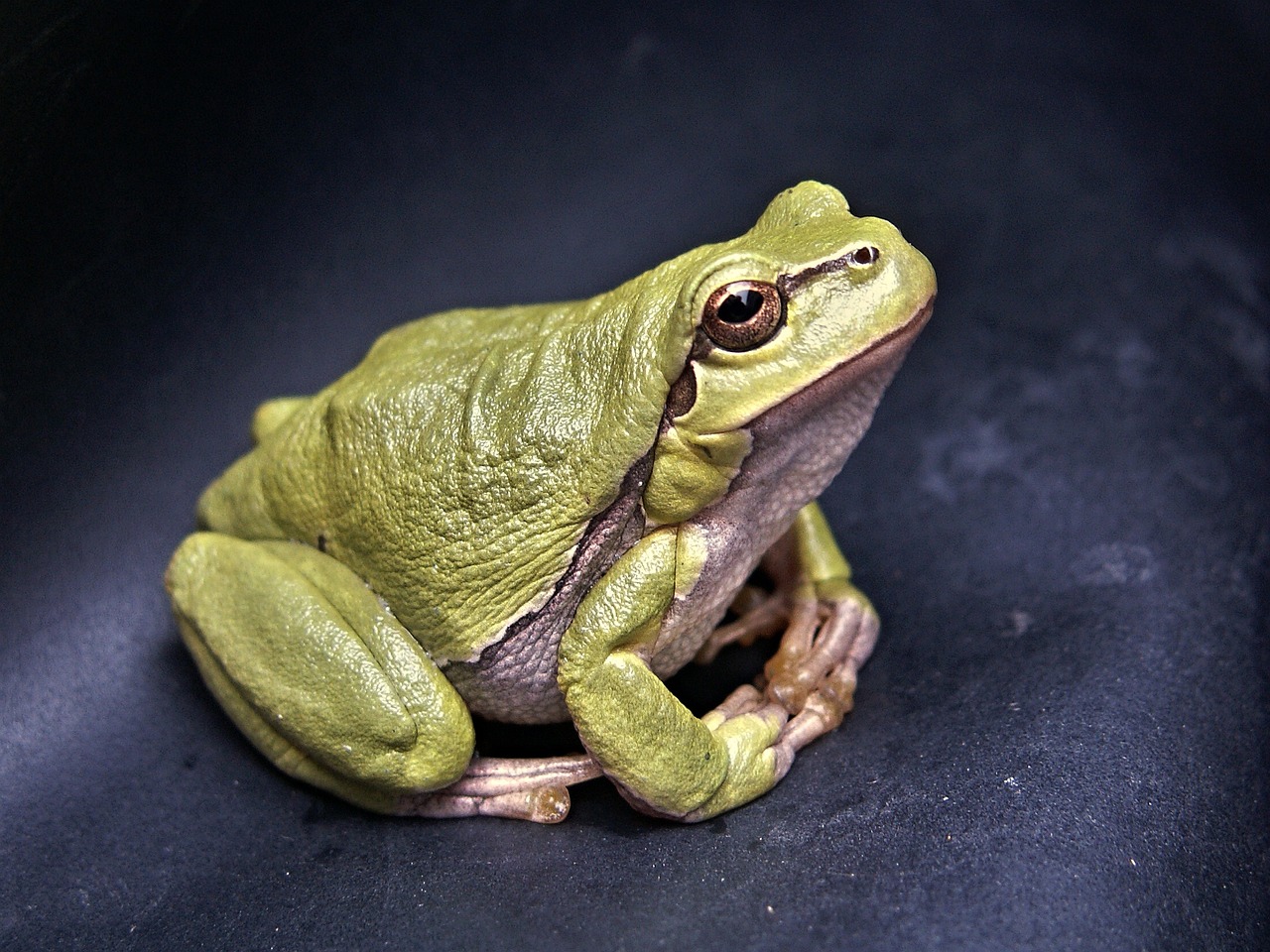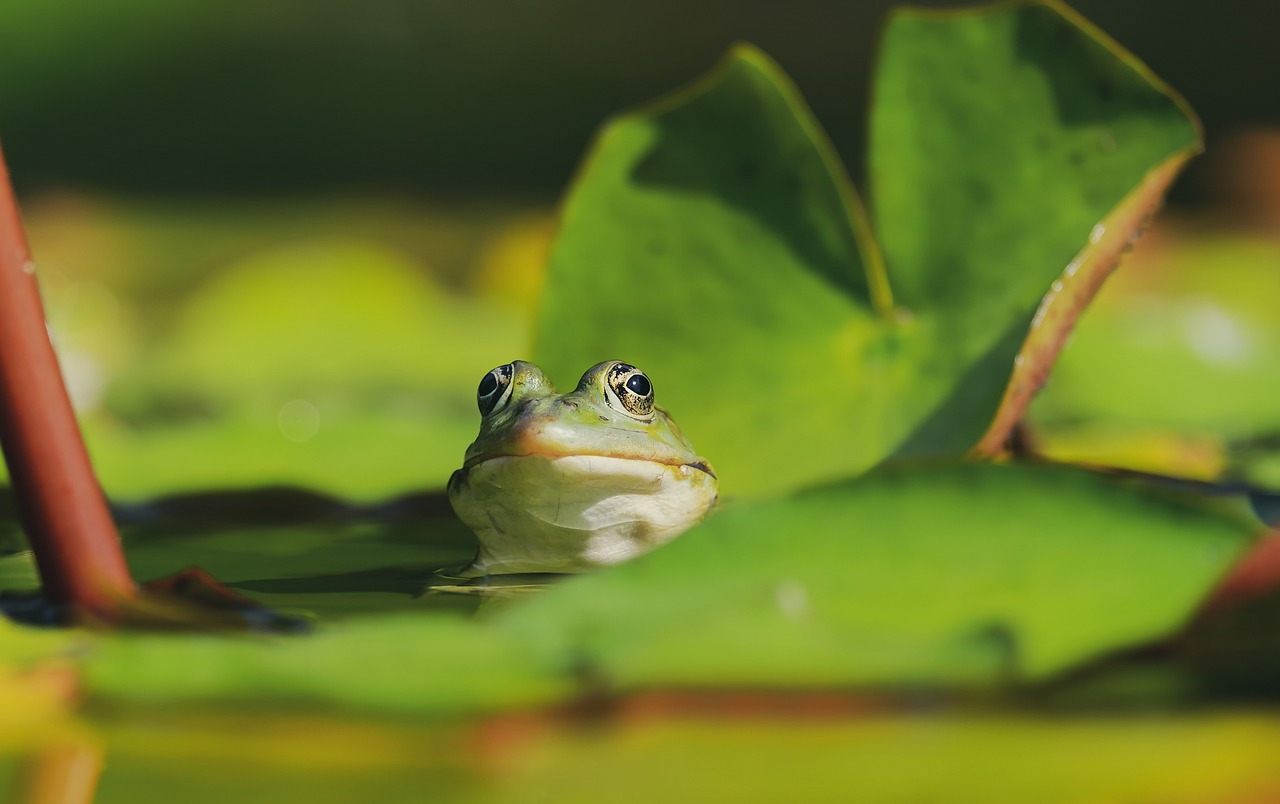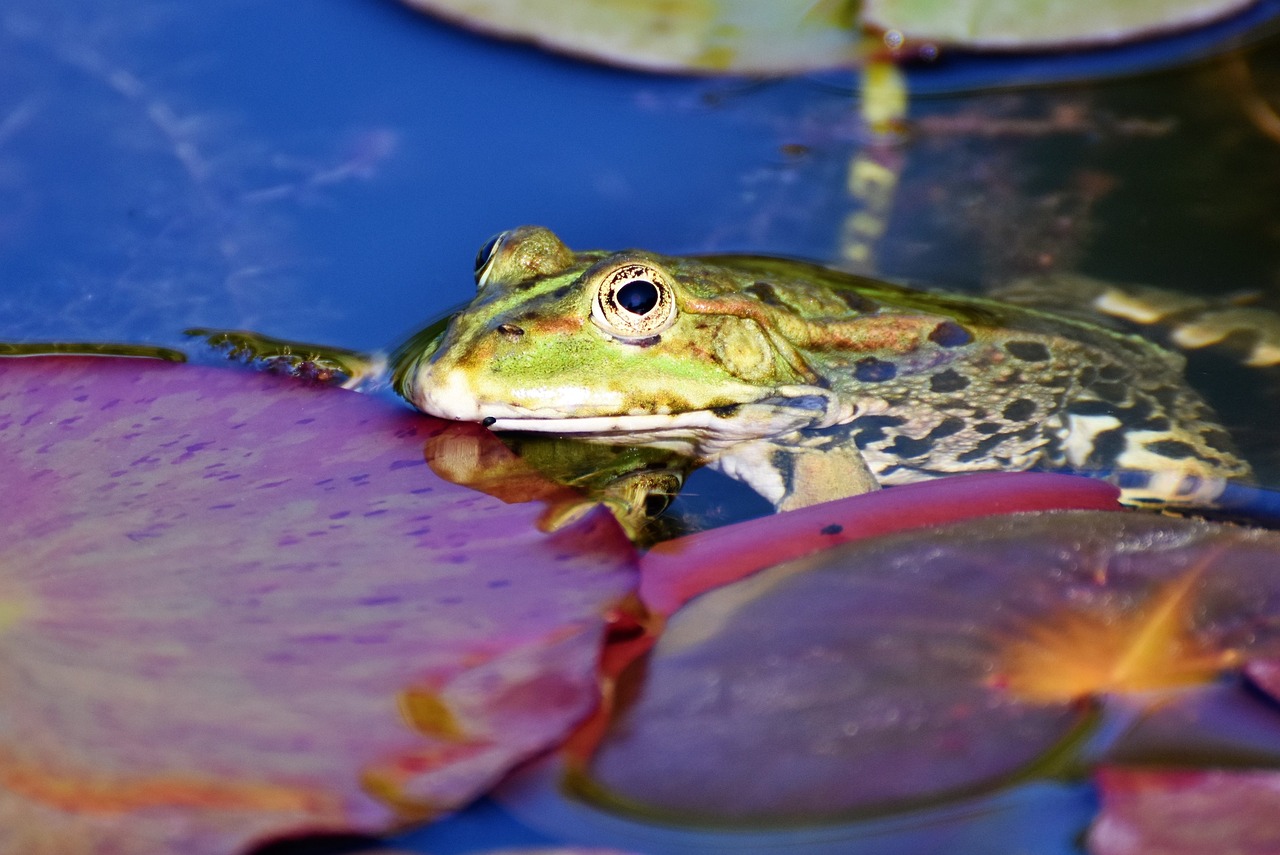Do frogs lay so many eggs? For centuries, the sheer number of eggs laid by frogs has perplexed scientists and pet owners alike. Frogs are renowned for their prodigious egg-laying, but why do they produce such a large number of eggs?
This post delves into the complex realm of frog reproduction, examining types of frogs that lay eggs, potential explanations for their high egg output, how many eggs each species typically produces, and providing advice on caring for frog eggs and tadpoles.
So let’s dive into the fascinating world of amphibian reproduction to answer our initial question: Do frogs really lay so many eggs?

Table of Contents:
- Frog Reproduction
- Types of Frogs That Lay Eggs
- Reasons Why Frogs Lay So Many Eggs
- How Many Eggs Do Frogs Lay?
- Caring for Frog Eggs and Tadpoles
- FAQs in Relation to Why Do Frogs Lay So Many Eggs
- Conclusion
Frog Reproduction

Frogs reproduce by laying eggs, fertilizing them and developing tadpoles. Egg laying is the first step in frog reproduction. Frogs lay their eggs in water or on moist surfaces such as wet leaves or mud. The amount of eggs laid can differ significantly, from hundreds to thousands, based on the species and environmental conditions. After egg-laying, frogs will use their hind legs to push sperm over the surface of the eggs for fertilization. This process usually takes place within a few hours after egg-laying has occurred.
Once fertilized, development begins immediately with some species taking only days while others may take weeks before hatching into tadpoles (also known as polliwogs). When they emerge, the tadpoles may be long-tailed or appear like miniature grown frogs without any tail – varying depending on species. As they grow older, these tadpoles undergo metamorphosis where their body changes shape until eventually becoming an adult frogs that are capable of reproducing itself again – completing the cycle.
To ensure survival of offspring during this vulnerable stage, frogs often lay large numbers of eggs so that even if some do not survive due to predation or unfavorable environmental conditions there will still be enough survivors left to continue propagating the species. Additionally, food sources such as algae and other microorganisms become more available for juvenile amphibians once larger numbers are present which helps increase overall population size over time.
In conclusion, it is clear that although frog reproduction may appear simple in its basic form, it involves many complex steps which must come together perfectly for the successful continuation of a species’ lineage over time.
Frogs spawn in an intriguing manner, comprising egg-laying, fertilization and the hatching of tadpoles. While some frogs lay many eggs at once, others lay fewer; this article will explore the types of frogs that do so.
Types of Frogs That Lay Eggs

Tree frogs, common frogs and toads are the three primary varieties of amphibians or female frogs that lay eggs. Common frogs, also known as “true” or “water” frogs, belong to the family Ranidae and include species like the American Bullfrog, Green Frogs and Leopard Frogs. Common frogs, toads and tree frogs lay eggs near water sources such as ponds, lakes or slow-moving streams where they can find food for themselves and their young. They lay large clusters of jelly-like eggs in shallow water which hatch into tadpoles after a few days.
During mating season, tree frogs belonging to the family Hylidae will lay hundreds if not thousands of small round eggs on leaves above standing waters such as swamps or ponds. This is done so that when they hatch, their offspring have easy access to food sources below them in the form of algae and other tiny organisms found in those environments. By climbing up high branches at night, these amphibians can remain close enough to access their breeding grounds while avoiding predators. Keywords: Mating Season, Tree Frogs, Family Hylidae, Hundreds/Thousands Eggs, Leaves Above Standing Waters (Swamps/Ponds), Food Sources Below (Algae/Organisms), Climb High Branches (Avoid Predators).
Frogs, a motley assortment of amphibians, produce dissimilar quantities and forms of eggs. Frogs lay their eggs in different ways to maximize the odds that some will make it through to maturity. As such, understanding why frogs lay so many eggs is essential for appreciating these fascinating creatures even more.
Reasons Why Frogs Lay So Many Eggs

Frogs lay an incredible number of eggs in order to increase the chances that at least some of their offspring will survive. In fact, some species can lay up to 10,000 eggs in one clutch. Many frogs have adapted by producing huge amounts of progeny to counter the danger posed by predators and environmental fluctuations.
The first reason why frogs lay so many eggs is for increased chances of survival for their offspring. The greater the quantity of eggs, the more potential for some to make it through to maturity. Frogs also need a certain amount of food available for their young if they are going to survive until adulthood. By producing a large number of eggs, there is a greater chance that enough food sources will be available when the tadpoles hatch and begin feeding on algae and other small organisms found in ponds or streams where they live.
The second reason why frogs lay so many eggs has to do with adaptation to environmental changes and predators. Since these creatures cannot move quickly or defend themselves against most predators, having lots of babies increases their odds for surviving any potential dangers such as extreme weather conditions or predation by birds or other animals. Additionally, since frog populations tend to fluctuate due sudden shifts in environment conditions like drought or cold spells, laying numerous amounts of eggs helps them rebound after population declines caused by natural disasters or human activities such as habitat destruction or pollution.
Frogs lay numerous eggs to bolster their odds of endurance and adaptation in the wild, making it essential to comprehend this process. Moving on, let’s take a look at how many eggs frogs typically lay in one clutch.
How Many Eggs Do Frogs Lay?

The amount of eggs a frog can produce may differ significantly based on species and environment. On average, most frogs will lay anywhere from hundreds to thousands of eggs per clutch. Some species are even capable of laying up to 10,000 eggs in one go. This is why it’s important for pet owners to research their particular breed before bringing them home – you don’t want your new frog family taking over the house.
When it comes to egg-laying, some frogs have adapted their reproductive strategies accordingly. For example, tree frogs tend to lay fewer eggs than other types because they live in areas with unpredictable climates and resources. As such, they need more time and energy devoted towards caring for each individual offspring rather than producing large clutches that may not survive due to harsh conditions or predators.
On the other hand, common frogs are able to produce larger numbers of offspring as a way of ensuring at least some survive into adulthood despite potential dangers posed by predators or changing environments. They also benefit from having more tadpoles competing for food sources which increases the chances that at least some will make it through development successfully.
Caring for frog eggs and tadpoles requires patience and dedication from pet owners who should be aware that providing an appropriate water temperature and quality is essential for successful hatching and growth rates amongst these creatures. Additionally, feeding the tadpoles properly is necessary as different species require different diets; monitoring development closely helps ensure any abnormalities or issues can be addressed quickly before things get out of hand.
In conclusion, understanding how many eggs your particular breed lays is key when considering adopting a pet frog. This knowledge coupled with proper caretaking techniques ensures both you and your new family member have a positive experience together.
The amount of eggs produced by frogs can range significantly, with some species producing hundreds to thousands. As such, proper care must be taken when caring for these delicate egg clutches and their developing tadpoles in order to ensure successful development.
Caring for Frog Eggs and Tadpoles

Caring for frog eggs and tadpoles is essential to ensure their successful development. It requires a bit of knowledge, as well as the right environment and food sources.
Providing Appropriate Water Temperature and Quality: The water temperature should be kept between 65-75 degrees Fahrenheit with a pH level between 6.5-7.5 for optimal growth. In addition, it is essential to maintain the water cleanliness by frequently changing it or employing a filtration system if available. This will help prevent any bacteria from growing in the tank which can harm your frogs’ eggs or larvae.
Feeding the Tadpoles Properly:
In order for your tadpoles to grow properly, they need to have enough nutrients in their diet such as algae wafers or other small aquatic creatures like daphnia and brine shrimp nauplii (baby shrimp). It’s also important that you feed them several times per day so they get all of the necessary nutrition they need during this stage of development.
Monitoring the development of your tadpoles will provide you with a heads up on when to transfer them from their tank into bigger bodies of water. Look for signs like legs appearing symmetrically, eyes moving toward center position at the top, tail shrinking and then disappearing completely, webbing growing between toes, skin transitioning from bumpy scales to smooth texture and lungs evolving as time passes by. By keeping an eye out for these changes while they grow up in captivity tanks can give you peace-of-mind that predators or lack of food resources won’t be issues once released into larger habitats.
Monitoring the development of your tadpoles will provide you with a heads up on when to transfer them from their tank into bigger bodies of water. Look for signs like legs appearing symmetrically, eyes moving toward center position at the top, tail shrinking and then disappearing completely, webbing growing between toes, skin transitioning from bumpy scales to smooth texture and lungs evolving as time passes by. By keeping an eye out for these changes while they grow up in captivity tanks can give you peace-of-mind that predators or lack of food resources won’t be issues once released into larger habitats
FAQs in Relation to Why Do Frogs Lay So Many Eggs

What is the reason why frogs lay many eggs?
Frogs lay many eggs as a way of increasing their chances of successful reproduction. This is because the environment can be unpredictable and not all eggs will survive to adulthood. By laying more eggs, frogs increase the likelihood that at least some of them will make it through to maturity, ensuring their species’ survival. Additionally, this also allows for greater genetic diversity among frog populations which further increases reproductive success in an ever-changing world.
What is a reason why amphibians lay very many eggs?

Amphibians lay very many eggs because they have a low rate of survival due to their aquatic lifestyle. Predation, illness and external factors can drastically decrease the number of young that make it to adulthood, thus necessitating amphibians to lay a great many eggs in order to up their odds of having some reach maturity. To compensate for this, amphibians produce large numbers of eggs in order to increase the chances of some surviving until maturity. This strategy is known as “r-selection” which involves producing numerous small offspring with little parental investment.
Why do frogs produce a huge number of eggs each year?

A female frog lay thousands of eggs at once, which increases their odds that some will survive in spite of predators and other environmental hazards. The sheer number also helps ensure that enough fertilized eggs are produced for mating pairs to form, as well as providing genetic diversity among offspring. This strategy of producing large numbers of eggs is common among amphibians and other aquatic animals.
Conclusion

In summary, frogs have evolved to lay large quantities of eggs in order to ensure that some will survive the aquatic environment. The exact number of eggs laid by each species varies, but can range from hundreds up into the thousands. It is important that pet owners understand how their frog reproduces and what kind of care is needed when caring for newly-hatched tadpoles or developing froglets. With proper research and preparation, it’s possible to provide your pet with an optimal habitat where they can thrive while you enjoy watching these amazing creatures grow.
Discover the answers to your questions about frogs and their egg-laying habits on AltPet.net! Our experts provide reliable, up-to-date information so you can make informed decisions for your pet’s health and wellbeing.

